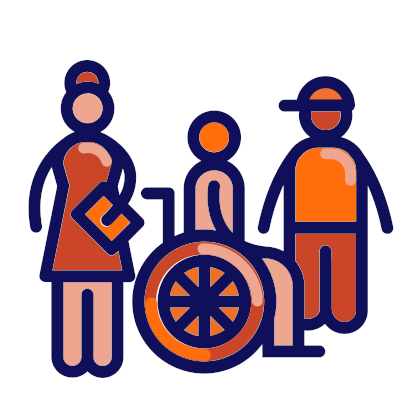Dealing with propaganda, misinformation and fake news

It is vital for schools to provide students with a solid education on media and information literacy as part of the curriculum.
Teachers must be well-trained in the subject to empower students with the necessary competences to critically understand and assess information reported by all forms of media.
Projects in partnership with national and local authorities and media organisations are encouraged.
Facts & figures
Two thirds of EU citizens report coming across fake news at least once a week.[1]
Over 80% of EU citizens say they see fake news both as an issue for their country and for democracy in general.[2]
Half of EU citizens aged 15-30 say they need critical thinking and information skills to help them combat fake news and extremism in society.[3]
What is propaganda, misinformation and fake news?
The terms ‘propaganda’, ‘misinformation’ and ‘fake news’ often overlap in meaning. They are used to refer to a range of ways in which sharing information causes harm, intentionally or unintentionally – usually in relation to the promotion of a particular moral or political cause or point of view.
It is possible to separate out three clearly different uses of information which fall into this category:
- Mis-information - false information shared with no intention of causing harm
- Dis-information - false information shared intentionally to cause harm
- Mal-information - true information shared intentionally to cause harm.[4]
Although none of these phenomena are new, they have taken on new significance recently with the widespread availability of sophisticated forms of information and communication technology. The sharing of text, images, videos, or links online, for example, allows information to go viral within hours.
Why is propaganda, misinformation and fake news important at school?
Since information and communication technology is so central to their lives nowadays, young people are particularly vulnerable to propaganda, misinformation and fake news. Young people spend a significant amount of their time watching television, playing online games, chatting, blogging, listening to music, posting photos of themselves and searching for other people with whom to communicate online. They rely heavily on information circulated online for their knowledge of the world and how they perceive reality. Many parents do not have sufficient technical competence to keep up with their children’s online activity, or educate them about the risks they might be facing. Schools, therefore, have a duty to provide young people with the critical and information skills which they cannot access at home.
“The significant rise of fake news as propaganda in recent years makes it critical that students have the skills they need to identify truth and discern bias.”[5]
The ability to respond critically to online propaganda, misinformation and fake news is more than a safe-guarding tool, however, it is also an important democratic competence in its own right. Analytical and critical thinking, and knowledge and critical understanding of the world, including the role of language and communication lie at the heart of the Council of Europe Reference Framework of Competences for Democratic Culture. They are central to Digital Citizenship Education and Media and Information Literacy.[6]
“School is the one place where it is absolutely crucial to train future citizens to understand, to criticise and to create information. It is in schools that the digital citizen must begin and maintain constant critical thinking in order to attain meaningful participation in his or her community.”[7]
The ability to handle off-line as well as online propaganda, misinformation and fake news is also a key skill in a number of other school subjects, e.g., History, Social Studies, Science, Religious Studies and Art. Young people may study the use of nationalistic and patriotic slogans, or so-called ‘atrocity propaganda’ in WW1 in History, for example; or art forms designed to support particular ideologies in Art lessons.
Another area in which information and communication technology is becoming an issue for schools is through adverse comments made about teachers and schools on social media. Schools are finding that parents and others increasingly turn to social media when they have a dispute or disagreement with their school, e.g., over school rules, school policies, or staff behaviour. How to handle online critical or defamatory comments or campaigns of this sort has become a matter of concern for leaders and managers in some schools.[8]
What are the challenges?
There are a number of challenges facing schools wishing to take propaganda, misinformation and fake news seriously as an educational or social issue:
- Teachers’ own online activity and area of experience is often quite limited and frequently lags behind that of their students. This can make them reticent to take on this area of teaching and learning without a significant commitment to professional development.
- The speed with which technology and young peoples’ online activity changes makes it difficult for teachers to keep up-to-date with recent developments. Even professional development programmes can go rapidly out-of-date.
- It can be difficult finding a discrete slot in the school timetable where issues relating to the creation and sharing of information can be taught. While aspects may be raised in a number of subjects, it can be a problem finding a space in an over-full curriculum where the phenomenon can be dealt with head-on as an issue in its own right.
- The description ‘fake news’ does not mean there is such a category as ‘true’ news. All news is a selection and written to suit a particular audience for a particular purpose. Providing the depth of analysis and sophisticated skills that do justice to this topic can be a challenge for some schools, especially in terms of teacher competence and training.
“States should take measures to promote media and digital literacy, including by covering these topics as part of the regular school curriculum and by engaging with civil society and other stakeholders to raise awareness about these issues.”[9]
How can schools get active?
Providing training for teachers on media and information literacy is the key to raising the profile of the issue in schools. Even though it may have a tendency to date, training can at least alert teaching staff to the importance of this area of learning for their students. The more important teachers see the area, the more they will feel the need to continuously up-date their skills themselves.
While it is important to recruit as many teachers as possible to this work, it can be more effective in the long run to start by appointing an individual teacher, or a small team, to lead on media and information literacy in the school. This element of specialist expertise can be charged with:
- Keeping staff up to date with new developments in information and communication technology
- Training them in strategies for handling propaganda, misinformation and fake news
- Helping them integrate these issues into the curriculum of different subjects
- Leading on school-policy development and action planning in this area.
In addition to these sorts of developments, there are a number of other initiatives a school can take to meet the challenges of the rapidly changing world of online propaganda, misinformation and fake news. These include:
- Special days or events in school on the subject of propaganda, misinformation or fake news as a way of overcoming the problems of an over-crowded formal curriculum
- Peer education initiatives in which older students instruct and counsel younger students in the safe handling of information they access in the media
- Partnerships with outside professionals or companies with expertise in this area, e.g., journalists, IT companies, universities
- Virtual links with schools in other regions or countries enabling students to get a different perspective on news and current affairs
- Recruiting parents with expertise in information and communication technology to help with school policy development or work alongside teaching staff to enrich student learning.
[1] Flash Eurobarometer 464 , 2018
[3] Flash Eurobarometer 455, 2018
[4] Wardle & Derakhshan, H., 2017. Information Disorder: Toward an interdisciplinary framework for research and policy making. Strasbourg, France: Council of Europe.
[5] When is fake news propaganda?, Facing History and Ourselves, 2018
[6] Digital Citizenship Education Handbook, 2019
[8] Council of Europe: Managing Controversy: a whole school training tool, 2017
[9] OSCE: Joint declaration on freedom of expression and “fake news”, disinformation and propaganda
 Resources on Dealing with Propaganda, misinformation and fake news
Resources on Dealing with Propaganda, misinformation and fake news
 Related schools projects
Related schools projects
Address: Blisterhaugveien 9 – 7079 Saupstad
Country: Norway
Project: ‘Democracy in practice’ an elective subject in school
 Working language during the project:
Working language during the project:
- Norwegian and English
 Themes of the Council of Europe campaign “FREE to SPEAK, SAFE to LEARN - Democratic Schools for All” covered:
Themes of the Council of Europe campaign “FREE to SPEAK, SAFE to LEARN - Democratic Schools for All” covered:
- Making children’s and students’ voices heard
- Addressing controversial issues
- Preventing violence and bullying
- Dealing with propaganda, misinformation and fake news
- Tackling discrimination
- Improving well-being at school
 Competences from the Reference Framework of Competences for Democratic Culture (CDC) addressed and where / how they were integrated:
Competences from the Reference Framework of Competences for Democratic Culture (CDC) addressed and where / how they were integrated:
 Target group age range:
Target group age range:
- 11 - 15 and 15 - 19
 Level of education:
Level of education:
- Lower secondary education
Short description of the project:
I teach an optional subject called Democracy in practice, so this is not a project. But the students select each year options from a variety of subjects. In Norway, there is of course a general overall teaching framework on everything that we do as teachers in school. And there are laws to follow on everything we carry out as a school towards our students. These laws describe the students’ rights in education. The Norwegian educational directorate has provided a manual that forms the basis of the subject, but the approach is also local. Each city or local community can develop their own version of the subject, as long as it contains the above-mentioned benchmarks that connect the overall teaching goals.
In 2013, I was asked to begin teaching this subject because the socio-economic conditions of the local community that I work in has since the 70’s been poor. At the national level, this often results in different actions and programmes for enhancing and improving these conditions. This also happens in other parts in Norway, as well as other countries near Norway.
Our aim was to implement a set of ways for thinking and acting, and to reflect on what to teach young people from different backgrounds on the topics which are the focus of this conference. It is fundamentally about how we learn as human beings to behave nicely to each other, how to live good lives, and how we can make this possible. How should we teach the different topics on the competences of this conference? We have chosen to do this in a practical way. We believe the following: if young people want to have their voices heard, to be raised by adults to have good values, they have to have the right set of skills. We use practical tasks, related to their own age group, and topics related to their daily experiences. We also involve them in the decision-making that concerns them. If we are building schools or playgrounds, or different leisure activities, parks, roads, art inside or outside, in their communities, they are heard. We as adults take their opinions on board in our decisions. This is often done through youth-councils. But we also do this in the classroom. We also travel across Norway to learn about democracy, controversial issues and peace work. We teach topics in different institutions and to different people. For example, the Norwegian government has its own cursus on topics like this. We organise meetings with members of parliament, we visit and work on school projects and the teachings of the Nobel peace-centre in Norway, we visit Utøya and teach controversial issues at the European Wergeland Center. We visited the 22.July Centre and work on violent radical-extremism. We discuss subjects such as ‘what do children and young people need to grow up and have good lives?’. We work with city planners, various artists and politicians before they take their decisions. We also work, on the softer side, on how to live good lives. We do this by addressing the above-mentioned descriptions on competences.
 Aims/objectives
Aims/objectives
To give young people a practical coping-toolbox on how to deal with the different obstacles they face both as young people and often as adults too. To teach them how to reflect upon different issues and within their own decision-making on topics and obstacles they will encounter.
 Expected results/outcomes
Expected results/outcomes
- To enhance their ability to reflect on life issues that are important to young people.
- To give them the tools that help both in critical situations and in coping with daily life-situations.
 Changes
Changes
We want to see our young people become robust and cope with their lives and aim to provide them that tools that will make this possible. The changes we hope for are in a way general, we want to contribute to our society through good teachings, and hope it rubs off on more people than those who sit in our classroom.
An average day on how we have to think as teachers on changes can be like this: you always have to adapt to various things throughout the school year, such as being on the alert with regard to what is happening in the world. The topics we are teaching cannot be taught without taking this into account. We live in a global world, and now that world is closer to all of us, mainly because of the internet. Everyone has the ability to get an update on almost anything just by ‘clicking’ on the world wide web. We as teachers and adult human beings need to be updated at all times with regard to how this world works if we are going be able to teach our children the good stuff!
 Challenges you faced
Challenges you faced
If I do not get any students, I have no one to teach!
 Time-frame of the project:
Time-frame of the project:
There are no estimated timeframe other than if the schools headmaster and his team decide to stop this elective subject.
 Council of Europe materials on citizenship and human rights education used while preparing or implementing your practice:
Council of Europe materials on citizenship and human rights education used while preparing or implementing your practice:
None but the things that we use are similar.







